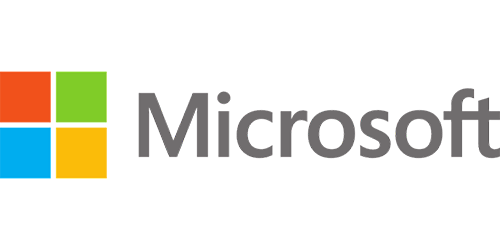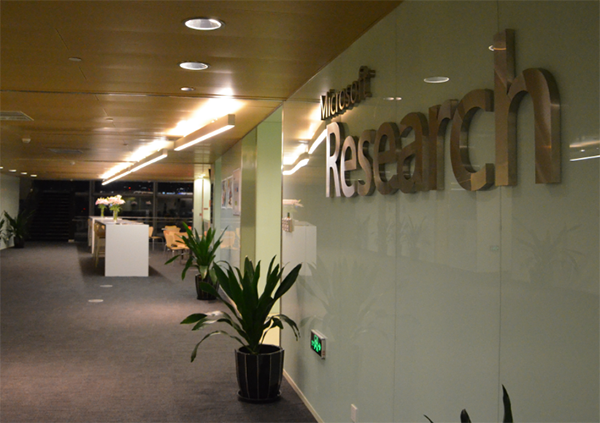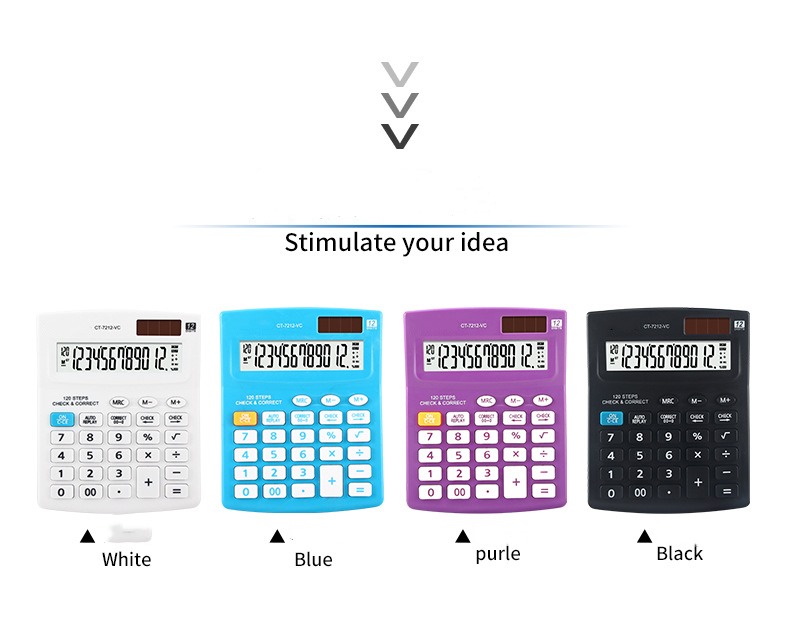Microsoft Research does not seem to have created the AlphaGo's DeepMind so dazzling, Microsoft's company is not born with a kind of "surge" aura like Apple, Google. Starting from Vista, Microsoft's every generation of products are almost completely lopsided. When WP+ Nokia lost a little share of its uncontested portfolio, it did not know how many people thought that Microsoft would die from this.

Microsoft Research, as an extremely important scientific research organization within Microsoft, is not only artificial intelligence, but almost all of Microsoft's products have their research results. Watching the fate of Microsoft float, it is hard to imagine what level of pressure they will be at.
However, the outside world may be somewhat surprised that Microsoft Research has not put pressure on the scientists there. Today, Microsoft Research Institute is still trying to put aside the turmoil of the outside world. Good place. And Microsoft Research is also understanding and respecting each of their decisions with a fairly broad mind. In seemingly desperate adversity, Microsoft actually made a living in the field of artificial intelligence in the fire and established its own position with Xiaona and Xiao Bing.
In fact, standing on a long-term scale, we can understand the biggest difference between Microsoft Research and the artificial intelligence labs of Google, Facebook, and Uber: In addition to the artificial intelligence labs of a few large companies, many The company's artificial intelligence lab is somewhat of a follower. It feels like deep learning today has brought a wave of new artificial intelligence waves, so many companies have established artificial intelligence laboratories. However, Microsoft Research Institute was established even earlier than most of them.

In an interview with Lei Yongwang (searching “Lei Feng Net†public number) for Dr. Yong Yong, executive vice president of Microsoft Asia Research Institute, he told us: Microsoft Asia Research Institute was established in 1998, and Microsoft Research Institute’s headquarters was back in 1991. The year was established. In 1991, Microsoft was still a relatively small company, but then Bill Gates had a clear vision for the future. One of his visions has long been widely circulated and has now become a reality in many places: I hope everyone has a computer on the table. However, his other not-so-obvious vision is just as important: He hopes that computers can read and understand the outside world like humans, and they can think and reason like people do.
Microsoft Research MissionMicrosoft Research Institute is established to achieve this goal. Yong Yong said that he believes that there are actually three missions in this Microsoft Research Institute: First, it is necessary to bring the level of all branch technologies in the computer field, including computer vision, machine learning, voice recognition, distributed systems, human-computer interaction, and so on. The fields do not only do their best, they must even advance the development of these areas. The second is not only focusing on technology, but also transforming these latest technologies into productivity and applying them to Microsoft products to improve users' experience. The third is to provide a thought and direction for the development of Microsoft in the next five to ten years as a similar think tank.
Yong Yong said: Microsoft Research Institute of Asia began to rapidly publish a large number of papers at major academic conferences just a few years later. A year of nearly a third of SIGGRAPH's papers are from Microsoft Research Asia. This undoubtedly reflects Microsoft's academic investment and strength. Microsoft also successfully applied these technologies to Microsoft's products. From each generation of Windows, Office, XBOX. Several products of the current fire have the process of transforming technology into productivity by Microsoft Asia Research Institute and its headquarters.
Microsoft Research eventually focused on human-computer interaction to give Microsoft a direction in the field of artificial intelligence. This is also firmly reflected in Microsoft's products. An extremely important part of current human-computer interaction is the search service. Although Microsoft is not a company that started search engines, it has undoubtedly realized the importance of "searching" under Microsoft Research's alert. In the accusation of compatibility and UAC, Windows VISTA has a very important new feature is ignored: that is the search box that first appeared in many unprecedented places. Although it hasn't been noticed too much, this search box has been kept in the back of the system until it has completed a perfect fusion with Xiaona in Windows 10. Microsoft now has its own search engine, Bing.
Invention projectThe development of Xiaona and Xiao Bing, as well as the use of a series of speech recognition technologies, is not an easy task. In the interview, Dr. Yong Yong cited another example: Skype translator, an instant speech translation software developed by the Voice Group of Microsoft Research. In this product, the requirements for the effectiveness of each link are even higher than those of Xiao Na and Xiao Bing. The processing of Skype translator has four links:
The first is to convert the words spoken by one of the parties into text.
The second reason is that people use the colloquial expression method in their daily communication, and the software needs to express the oral language in these discourses that is not helpful to the actual meaning to be deleted.
The third is the real-time translation of text in one language into text in another language.
The fourth is to use the same tone and tone to play to the other party.
These four links are in series with each other. If the success rate of each link cannot be sufficiently high, the final success rate will be greatly affected.

Unlike China, Skype has a very high market share in the global Internet phone market. Sources of pictures are technewstoday.
In all areas of speech recognition and image recognition, research at Microsoft Research has been advancing methodically. However, as mentioned earlier, Microsoft's recent road can be described as twists and turns.
FrustrationMicrosoft has always adhered to the "mobile-first" strategy in its products. This strategy means that Microsoft hopes to provide a perfect experience that can span all devices. There is no problem in this general direction, but the devil is in the details: Microsoft will " The perfect experience across all devices "understood for the "unified experience across all devices" without realizing - such as the mobile user needs and experience is actually completely different with the desktop, Microsoft is too seriously to think Create a "Windows" on the phone, but ignore the real needs of the mobile operating system.
As an organization focused on scientific research and exploration, Microsoft Research Institute is likely to face such a dilemma: The products that they have invested heavily in research and development have not received market recognition. But even so, Microsoft Research's positioning and R&D ideas and methods have never been affected.
Dr. Yong Yong’s attitude towards this is that the main work of Microsoft Research is the basic and applied research on computer science. These researches are in fact innovations, and they are to create a better future in our hearts. But the future is actually unpredictable. Will everything we believe in the future be correct? This must be biased.
However, we have a belief that our research process can in fact be regarded as an experiment. Many of the great theories and technologies in history are based on a large number of experiments, and many of these experiments will face the fate of failure. But if we give up because of the failure of experiments, then we will never have disruptive innovation. Therefore, the focus of our attention is not on failure, but on how to learn from failure, to brewing the next experiment, and finally to realize the future.
And for us to do technical research, actually looking for directions every day. If the project is unsuccessful, it may be a failure for the outside world. But for the researchers, they actually just take this process of finding directions as a pleasure. This kind of mentality will not make them feel depressed even if they face failure.
In short, we encourage our researchers to imagine the future, think about new ideas, and then try boldly. When there is a failure, try again.
Microsoft Research Asia, known as the Whampoa Military Academy of the Internet community, is closely related to this inclusive and forward-thinking philosophy and mentality. Perhaps this is also one of the reasons that Microsoft has survived so many setbacks: Unlike Nokia, Microsoft actually sees the future to some extent, but the large body is not able to keep up with the times. The footsteps, and now this giant is adjusting himself to adapt to the new era. Yong Yong said in an interview that Microsoft is now opening up some research and innovation efforts to the outside world, so as to quickly obtain user feedback and improve itself. The ice was a good example. And these will undoubtedly help Microsoft better adjust itself, without the impact of a momentary success or failure, and will focus on the ultimate success.
The image from ccf.org.cn
Desktop Electronic Calculator advantage:
100% brand new and high quality Desktop Calculator;Chain and percentage calculation;
Double power supply, solar dual power-light power with battery back up for low light condition (for dual power mode);12-14 digits Desktop calculator, and many counter modes
Big display, convenient for viewing;

Desktop Electronic Calculator,Desktop Calculator,Mini Electronic Calculator,Desktop Electronic Solar Calculator
Dongguan City Leya Electronic Technology Co. Ltd , https://www.dgleya.com